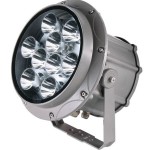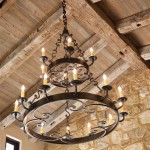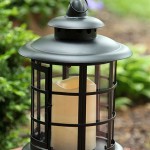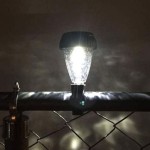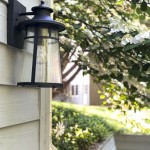Wiring Outdoor LED Lights with Sensors: A Comprehensive Guide
Illuminating outdoor spaces with LED lights enhances security, improves aesthetics, and provides safety during nighttime hours. Integrating sensors, particularly motion sensors or photocells, allows for automated lighting that further optimizes energy consumption and convenience. This article provides a comprehensive guide to wiring outdoor LED lights with sensors, covering essential components, wiring techniques, safety precautions, and troubleshooting tips.
Understanding the Components
Successful outdoor LED lighting with sensors requires a clear understanding of the individual components involved. Each component plays a crucial role in the overall functionality and performance of the system. The key components include:
LED Lights: Light Emitting Diodes (LEDs) are semiconductor light sources renowned for their energy efficiency, long lifespan, and durability. When selecting outdoor LED lights, consider factors such as lumen output (brightness), color temperature (warm vs. cool light), and weather resistance rating (IP rating). Higher IP ratings indicate greater protection against dust and water ingress.
Sensors: Sensors are devices that detect changes in the surrounding environment and trigger a response. Common types of sensors used in outdoor lighting include:
Motion Sensors: Motion sensors detect movement within a defined range. These sensors are often based on passive infrared (PIR) technology, which detects changes in infrared radiation emitted by warm objects (e.g., humans, animals). Motion sensors are ideal for security lighting, as they activate lights when movement is detected, deterring potential intruders.
Photocells: Photocells, also known as light sensors, detect ambient light levels. They automatically turn lights on at dusk and off at dawn, providing energy-efficient illumination without manual intervention. Photocells are useful for landscape lighting and general outdoor illumination.
Dual Technology Sensors: These combine motion and light sensing capabilities. They only activate the lights when both motion is detected and ambient light is below a certain threshold, preventing unnecessary illumination during daylight hours.
Power Supply: Outdoor LED lights require a constant current or constant voltage power supply, depending on the specific type of LED fixture. The power supply converts standard line voltage (e.g., 120V AC in North America) to the appropriate voltage and current required by the LEDs. It is essential to choose a power supply that is rated for outdoor use and has sufficient wattage to power all the LED lights connected to it.
Wiring: Outdoor wiring must be appropriately rated for outdoor use and capable of handling the electrical load. Underground Feed (UF) cable is commonly used for burying wiring, while weatherproof wire connectors and junction boxes are necessary for making secure and protected connections. The gauge of the wire should be selected based on the amperage and distance to prevent voltage drop.
Junction Boxes: Junction boxes provide a safe and weatherproof enclosure for making electrical connections. Outdoor-rated junction boxes are typically made of durable materials like plastic or metal and have a gasketed cover to prevent water ingress.
Essential Wiring Techniques
Proper wiring is crucial for the safe and reliable operation of outdoor LED lights with sensors. The following steps outline the general wiring process, but it is always recommended to consult a qualified electrician if there is any uncertainty regarding electrical work.
Safety First: Before starting any electrical work, ensure the power to the circuit is turned off at the breaker. Use a voltage tester to verify that the circuit is de-energized. Wear appropriate personal protective equipment (PPE), such as insulated gloves and safety glasses.
Planning the Layout: Plan the placement of the LED lights, sensors, and power supply. Consider the desired lighting effect, the sensor's detection range, and the proximity to a power source. Sketching a diagram can be helpful to visualize the wiring configuration.
Wiring the Sensor: The wiring configuration for sensors can vary depending on the type and manufacturer. Refer to the manufacturer's instructions for specific wiring diagrams. Generally, a motion sensor or photocell will have terminals for power (hot, neutral, and ground) and a terminal for connecting to the light fixture. The sensor acts as a switch, interrupting the circuit to the light fixture when motion is not detected or when ambient light is above a certain threshold.
A typical wiring arrangement for a motion sensor involves connecting the hot wire from the power supply to the "hot" terminal on the sensor. The "load" terminal on the sensor is then connected to the hot wire of the LED light fixture. The neutral wire from the power supply is connected directly to the neutral wire of the LED light fixture. The ground wire from the power supply is connected to the ground terminal on the sensor and the ground wire of the LED light fixture. This provides a complete circuit, allowing the sensor to control the flow of electricity to the light.
For photocells, the wiring is similar, but the sensor responds to light levels instead of motion. The photocell controls the hot wire going to the light fixture, turning it on when darkness is detected and off when daylight returns.
Connecting the LED Lights: Connect the LED lights to the power supply, adhering to the polarity specified by the manufacturer. For parallel wiring, each light fixture is independently connected to the power supply. This allows individual lights to function even if others fail. For series wiring, the lights are connected in a chain, and the total voltage drop across the lights must match the voltage output of the power supply. Series wiring is generally less common for outdoor applications due to the risk of all lights failing if one light fails.
Using Weatherproof Connectors: Use weatherproof wire connectors to ensure secure and waterproof connections. These connectors are typically filled with a silicone sealant that prevents moisture from entering the connection. Wrap the connections with electrical tape for added protection.
Burying Underground Wiring: If burying wiring underground, use UF cable and bury it at the appropriate depth required by local electrical codes (typically 18-24 inches). Enclose the wiring in conduit for added protection against damage. Mark the location of the buried wiring to prevent accidental damage during excavation.
Testing the System: After completing the wiring, turn the power back on at the breaker. Test the sensor and light fixtures to ensure they are functioning correctly. Adjust the sensor settings, such as sensitivity and on-time, to achieve the desired performance.
Key Considerations for Outdoor Applications
Outdoor environments present unique challenges that must be considered when wiring outdoor LED lights with sensors. Taking these factors into account will ensure a safe and long-lasting lighting system.
Weather Resistance: All components, including lights, sensors, power supplies, and wiring, must be rated for outdoor use. Look for components with a high IP rating to ensure protection against dust and water. Avoid using indoor-rated components outdoors, as they are not designed to withstand the elements and may pose a safety hazard.
Grounding: Proper grounding is essential for safety, especially in outdoor applications where exposure to moisture and lightning is more common. Ensure that all metal components, such as light fixtures and junction boxes, are properly grounded to prevent electrical shock. Use a ground fault circuit interrupter (GFCI) outlet for added protection.
Voltage Drop: Voltage drop occurs when the voltage at the end of a long wire run is lower than the voltage at the source. This can cause lights to dim or malfunction. To minimize voltage drop, use thicker gauge wire for longer runs and consider using a higher-voltage power supply.
Conduit and Protection: Protect wiring from physical damage by running it through conduit. Conduit is a rigid or flexible tube that provides a protective barrier against impacts, abrasion, and extreme temperatures. Use appropriate fittings to ensure a watertight seal. Protect exposed wiring from animals and lawn equipment.
Local Codes and Regulations: Adhere to all local electrical codes and regulations when wiring outdoor LED lights with sensors. These codes are designed to ensure safety and prevent hazards. Consult with a qualified electrician or local building inspector if you have any questions about code requirements.
Maintenance: Regularly inspect outdoor LED lights and sensors for damage or corrosion. Clean the lenses of the lights and sensors to ensure optimal performance. Replace any damaged components promptly. Cut back any vegetation that may obstruct the sensor's field of view.
By carefully considering these factors and following proper wiring techniques, you can create a safe, reliable, and energy-efficient outdoor LED lighting system with sensors that enhances the security and beauty of outdoor spaces.

Elegant Wiring Diagram Ceiling Light Diagrams Digramssample Diagramimages Wiringdiagramsam Outdoor Flood Lights Sensor Lighting Wire

Motion Sensor Lights Outdoor Light

Electrical Wiring From A Photocell To An Outdoor Led Floodlight Or Reflector 110v Devices

Diagrams Digramssample Diagramimages Wiringdiagramsample Wiringdiagram Check More At H Led Outdoor Lighting Security Lights Light Fixtures

How To Wire A Floodlight

Home Zone Security Solar Flood Lights Outdoor Motion Sensor Led Light 3500k Warm Color Temperature With No Wiring Required Black Newegg Com

How To Wire A Motion Sensor Multiple Lights Circuits Gallery

32w 3 Head Dusk To Dawn Motion Sensor Led Security Lights Outdoor Waterproof Flood For Porch Yard Garage Not Solar Powered Black

Super Bright Solar Outdoor Lights Motion Sensor Powered Ip65 Waterproof 3 Modes Wall For Fence Yard Garden Patio Front Door Led Wire Village Light Bulb String Bush

Home Zone Security Solar Step Lights Motion Sensor Led Outdoor Deck And With No Wiring Required 2 Pack Black Eli0989v Com
